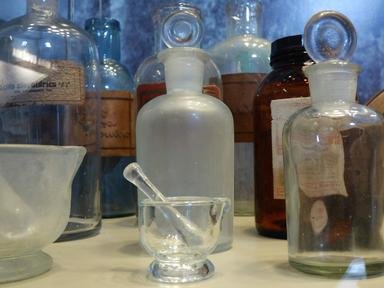Quiz Answer Key and Fun Facts
1. Which soft, silver-white metal follows hydrogen and helium on the periodic table with an atomic number of 3?
2. What is by far the most abundant element (by mass) in the universe?
3. Which element, with an atomic number of 85, is the heaviest of the naturally occurring halogens?
4. A colorless gas (at room temperature), which element with the atomic number 10 is common in the Universe but rare on Earth?
5. Metallic elements are often mixed to form alloys. Which alloy is formed by combining copper and zinc?
6. Which radioactive element, with the atomic number 114, has the chemical symbol 'Fl'?
7. If you burn sodium, what colour flame will be produced?
8. The name of which element, atomic number 77, derives from the Greek goddess of the rainbow?
9. Which chemical element, atomic number 53, with a name that derives from the colour of its vapour, is the heaviest 'essential element' (i.e. those widely utilized biologically by life forms)?
10. With an atomic number of 18, which of the noble gases, whose name means "lazy" or "inert", makes up almost one per cent of the Earth's atmosphere, making it the third must abundant gas?
Source: Author
EnglishJedi
This quiz was reviewed by FunTrivia editor
rossian before going online.
Any errors found in FunTrivia content are routinely corrected through our feedback system.
